How to sew a pretty flounce hem
Article may contain Amazon & affiliate links. As an Amazon Associate I earn from qualifying purchases at no additional cost to you.
Did you know that there are multiple techniques to create stunning ruffles in sewing? Let me show you how to make a flounce or a circular ruffle effortlessly, without the need for gathering fabric or using a specialized gathering or ruffling foot.
Flounce hem
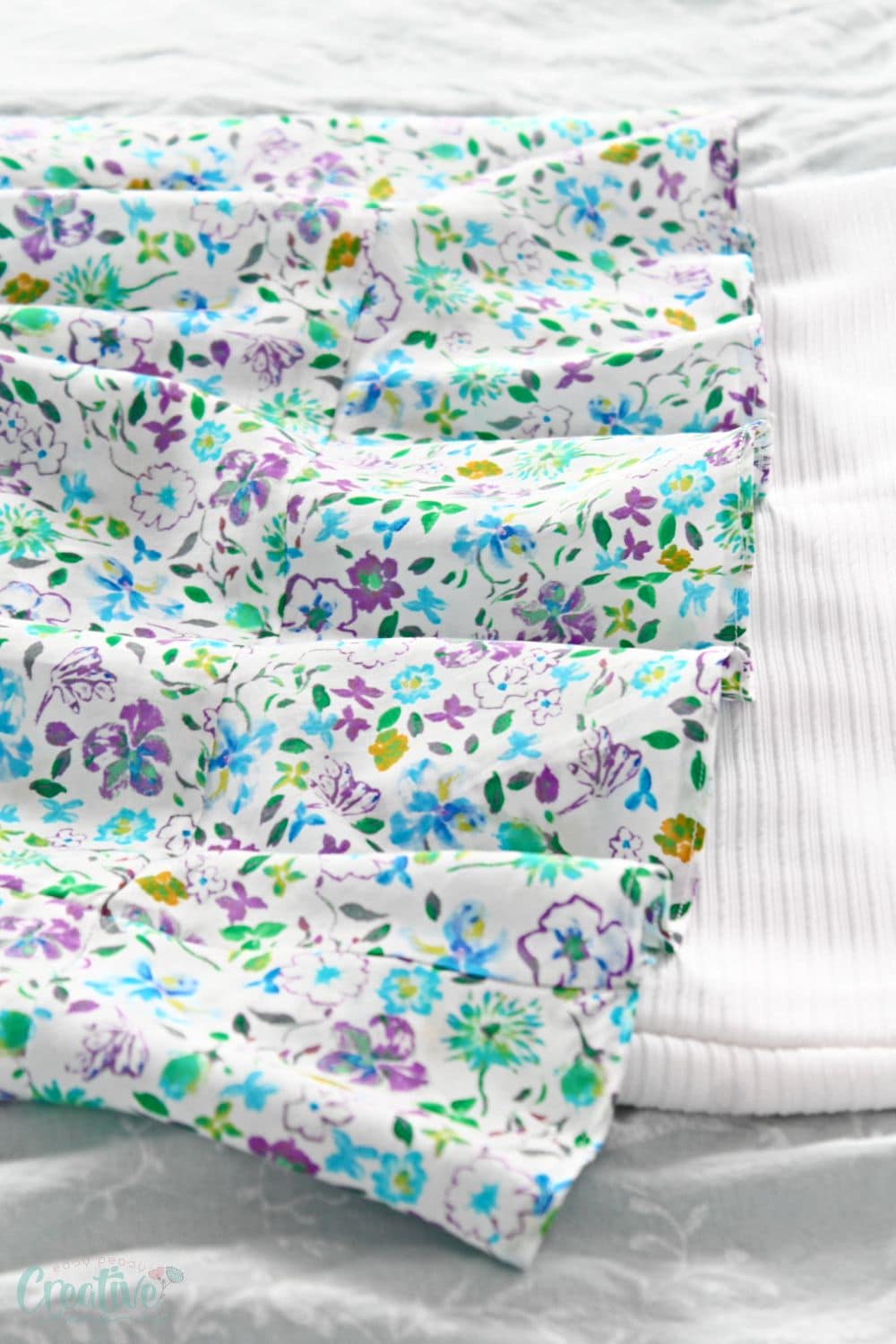
Adding a gorgeous ruffle to any piece of garment cannot get easier with a flounce ruffle. Making ruffles with a gathering foot might be the most popular method but learning how to make a flounce could save you lots of time! Not to mention it will add a sense of sweetness that is totally different than when making gathered ruffles.
This tutorial has been converted to a PDF file, available to purchase HERE. This article is completely free to read.
Making a flounce pattern is also super easy for any piece of garment! A flounce hem is basically a circular ruffle cut from a circular piece of fabric rather than a straight strip as you do with a regular ruffle. Below I’ll show you how to make a flounce in just a couple of simple steps. But the basic idea is to cut a strip of fabric in a circle and sew it to a straight piece of fabric (like a blouse, dress or skirt). This straightens the circle and creates a beautiful wave. The size of the curve and the depth of the ruffle creates more of a wave so the deeper the curve, the wavier the ruffle!
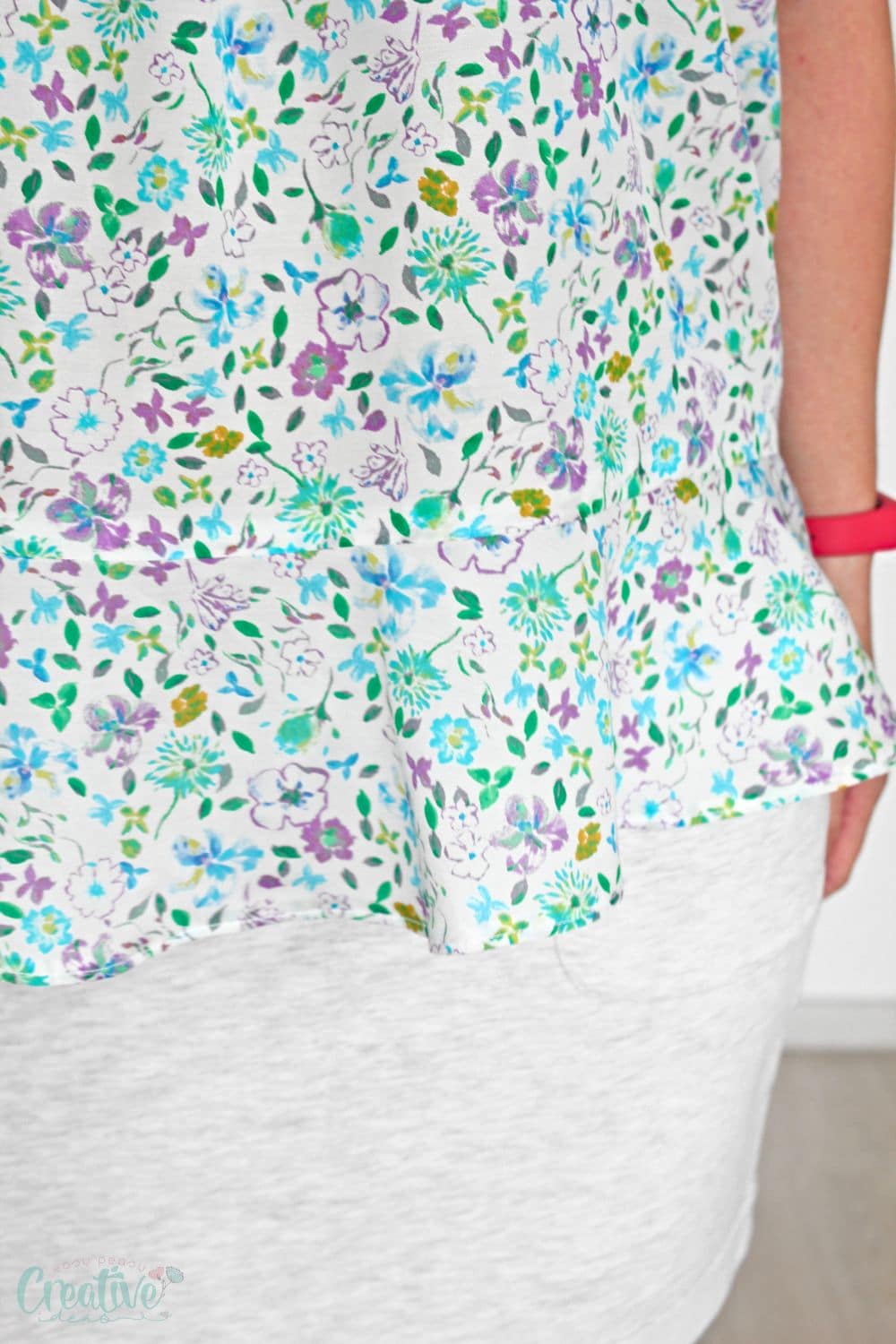
Want more sewing tips?
- How to match stripes
- DIY spaghetti straps
- Tips for clipping & notching seam allowances
- How to turn fabric tubes out easily
- Genius tip for sewing super sharp corners
In addition to being quick to make and super sweet, a flounce ruffle creates little to no bulk, making it easier to attach to any piece of garment with absolutely no problems. The gathers won’t move as it may happen in a regular gathered ruffle.
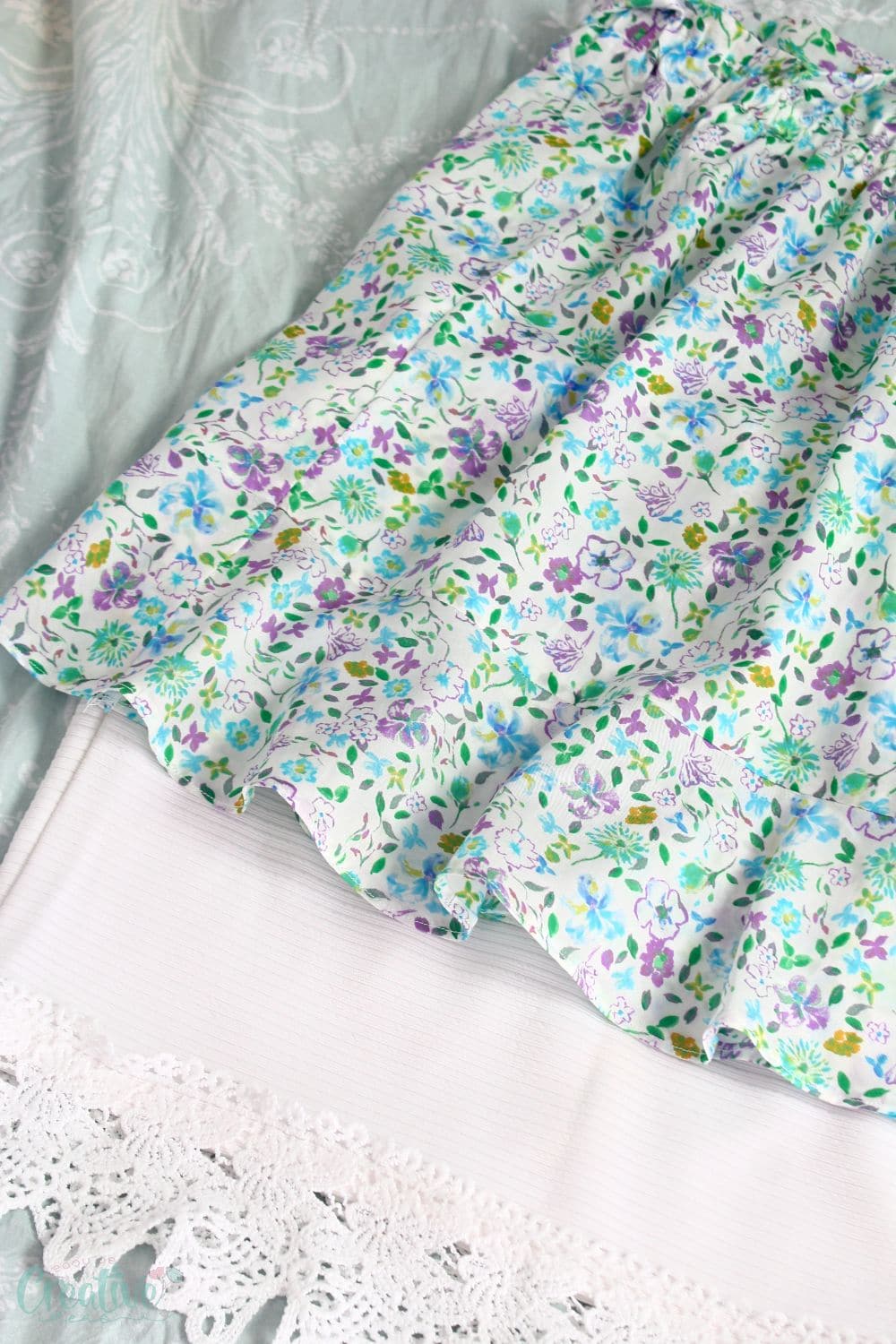
The circumference of your circular ruffle should match the edge of the garment. As for the width that is up to you. A wider flounce will look better as hems on skirts, dresses and blouses. A narrower flounce is best suitable as a hem for sleeves, as a finishing touch to a neckline or as a diagonal detail for blouses, t-shirts or swimsuits.
When I learned how to make a flounce I found it easier to just cut a long strip of circular fabric, attach the inner circle to the garment and then trim the excess off. I didn’t want to accidentally cut a flounce that is too small for my project. But if you’ve confident in your skills, just match the edge of the garment and the circumference of your circular strip and you’re good to go.
What is the difference between a ruffle and a flounce?
A ruffle and a flounce are both decorative fabric features that add volume and movement to a garment. The main difference between the two is how they are created – a ruffle is made by gathering a strip of fabric, while a flounce is made from cutting a circular shape and attaching it to the edge of the garment.
Ruffles tend to have more volume and create a more pronounced wave, while flounces are lighter and softer. Both techniques can be used to add beautiful detailing to any sewing project.
What is the difference between a flounce and a peplum?
A peplum is a type of flounce that is attached to the waistline of a garment, creating a short overskirt or ruffle. It adds volume and definition to the waist, making it a popular choice for tops.
The main difference between a flounce and a peplum is that the peplum is usually wider and shorter, while a flounce can be of any length.
How do you calculate flounces?
Calculating a flounce depends on the desired depth of the flounce and the circumference of the garment edge. To create a deeper wave, you will need to use more fabric for your flounce. A general rule is to multiply the length of the curved edge by 1.5 or 2 to determine how much fabric you’ll need for your circular strip.
For example, if the length of the curved edge is 20″ and you multiply it by 1.5, you will need a circular strip of fabric that is at least 30″ in length. This will create a flounce with a more gentle wave. If you want a more dramatic wave, you can multiply the length by 2 and use a 40″ circular strip.
How to make a flounce
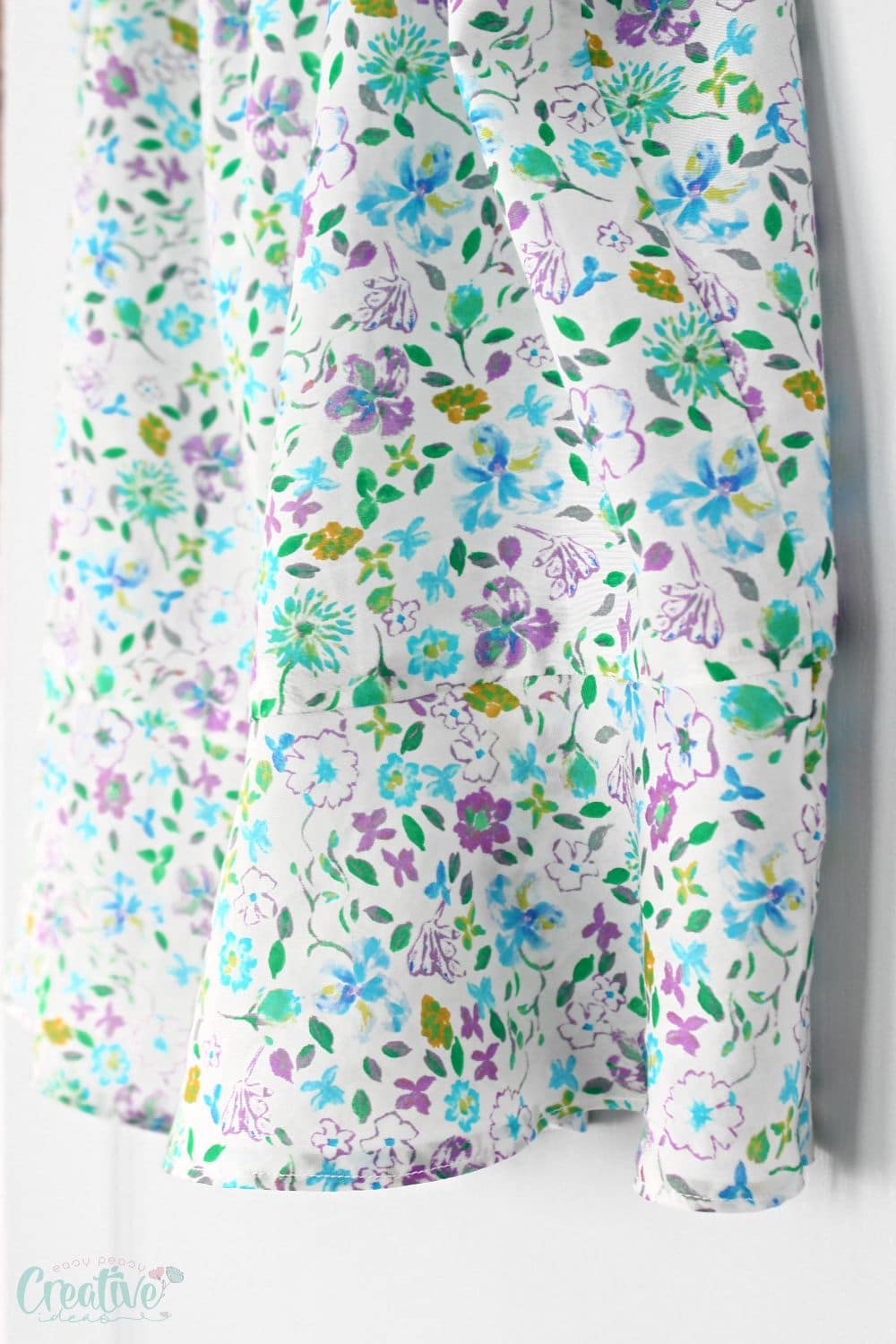
Materials:
- square of fabric
- measuring tape
- a round object with the circumference the same length or large than the edge of the garment you need to attach the flounce to
- a round object that is smaller than the object above (when picking these objects, bare in mind that the distance between the smaller circle and the larger circle is be the height of the ruffle)
- fabric marker
- sewing shears
- sewing machine
- matching thread
Directions:
There are two ways you can create your flounce, using a half circle strip of fabric or a full circle strip.
Making a half flounce pattern
- You can use a full flounce pattern or a half pattern as I did. The reason I wanted to make a half circle flounce is that I needed two layers of flounce. I added one to the front of a blouse and the second one to the back of my garment, then I joined the two piece of the blouse together at the sides.

- The process started with measuring the bottom of my blouse and divided it in half.
- I used this measurement to draw a half circle on a large piece of paper, using a super large bowl.
- After deciding how wide I wanted the flounce, I added that measurement to the circle I drew above and made a smaller circle, inside the larger one, using a smaller bowl.
- Then I used the half circle to cut two flounce ruffles from my fabric.

- You can also make a half circle, fold the fabric in half, place the half circle on the fold then mark and cut out. This will give you a continuous circle that you need to cut open so you can attach it to the garment.
Making a full flounce pattern
- Another alternative is to make a full circle directly on the fabric.
- Lay your fabric square on a table and place the larger round object on the fabric.
- Using a fabric pen, draw a circle around the object, onto your fabric.
- Get the smaller round object and draw a smaller circle inside the larger circle.
- Using your scissors, cut out the circle in the fabric.
- Attach the inner circle to the edge of the garment, using a regular stitch then finish the seam with a zig zag stitch or by serging it.

- Finish the outer circle with a regular hem (using this tutorial for sewing a round hem), a narrow hem or a rolled hem, depending on the type of fabric you’re using.

- Please note that if you’re using striped fabric, the direction of the strips in your flounce hem will change in all kinds of different directions, giving an unpleasant look to your ruffle. So you might want to use plain fabric to make your flounce ruffle.
I hope you enjoyed this tutorial. Please let me know your thoughts in the comment section below and don’t forget to rate this tutorial. Thanks!
Pin to save for later
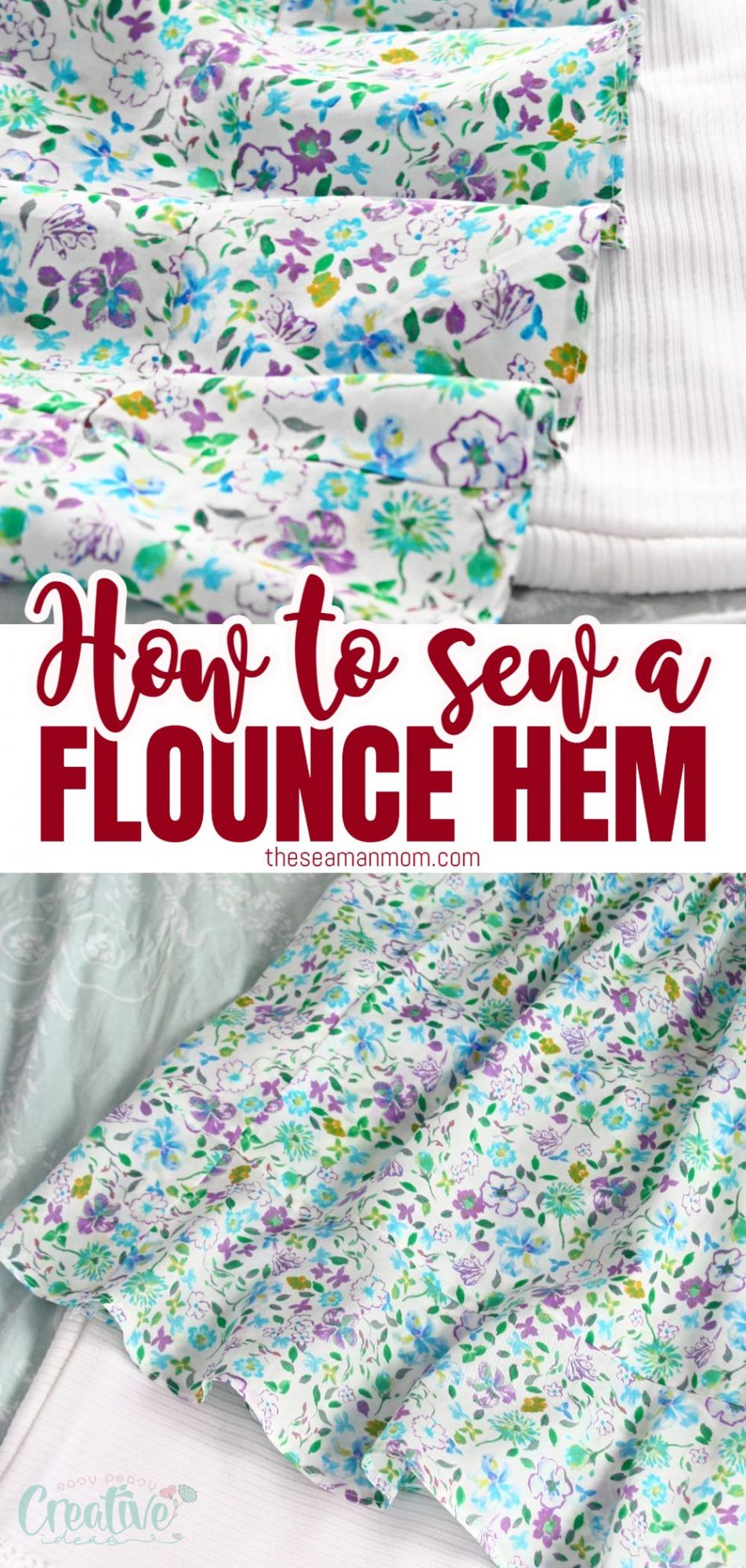
Most popular sewing projects:
- Corded bag handles tutorial
- How to sew a round hem
- Flutter sleeve dress pattern
- Laminating cotton fabric


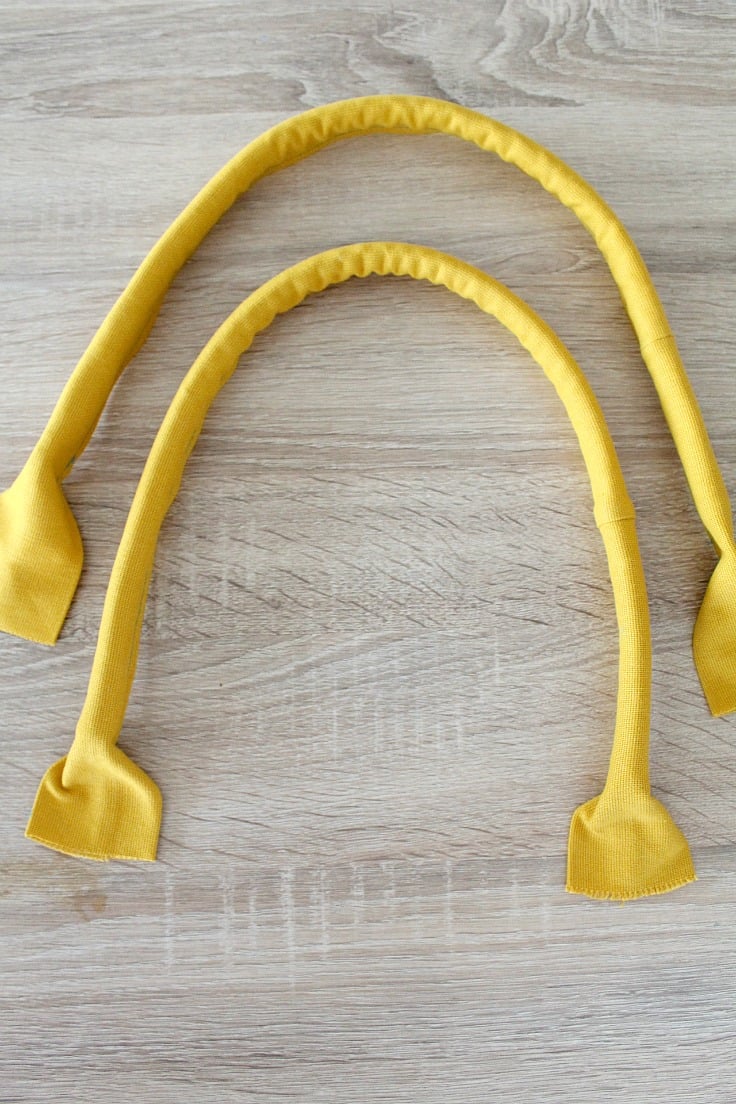
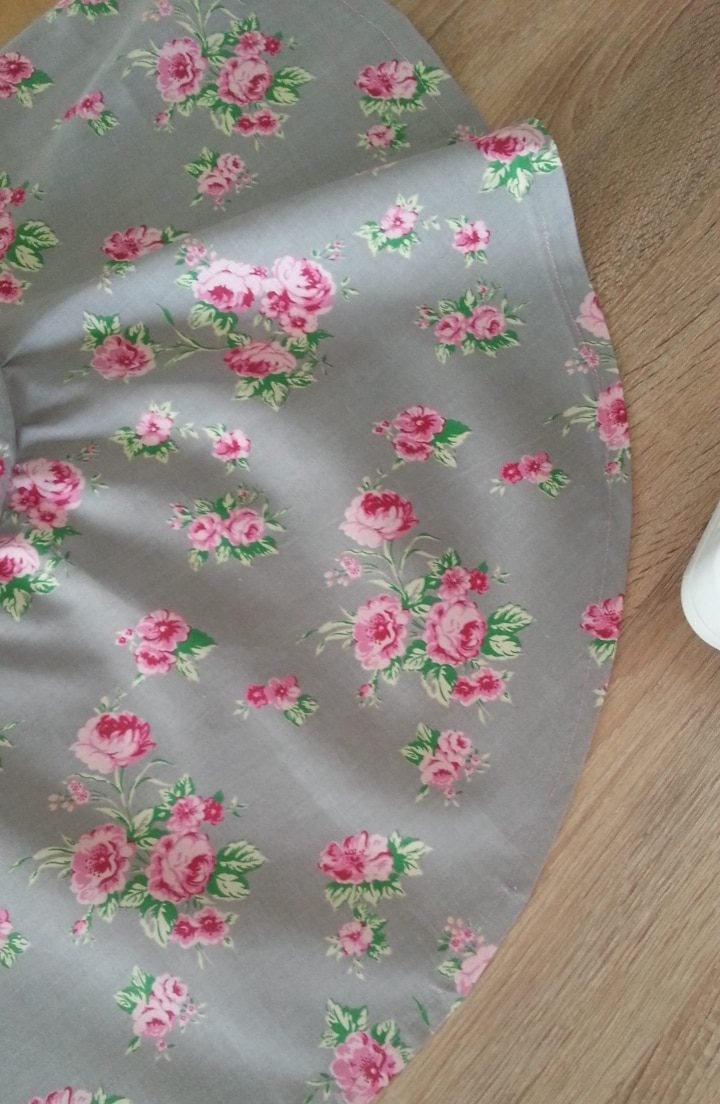
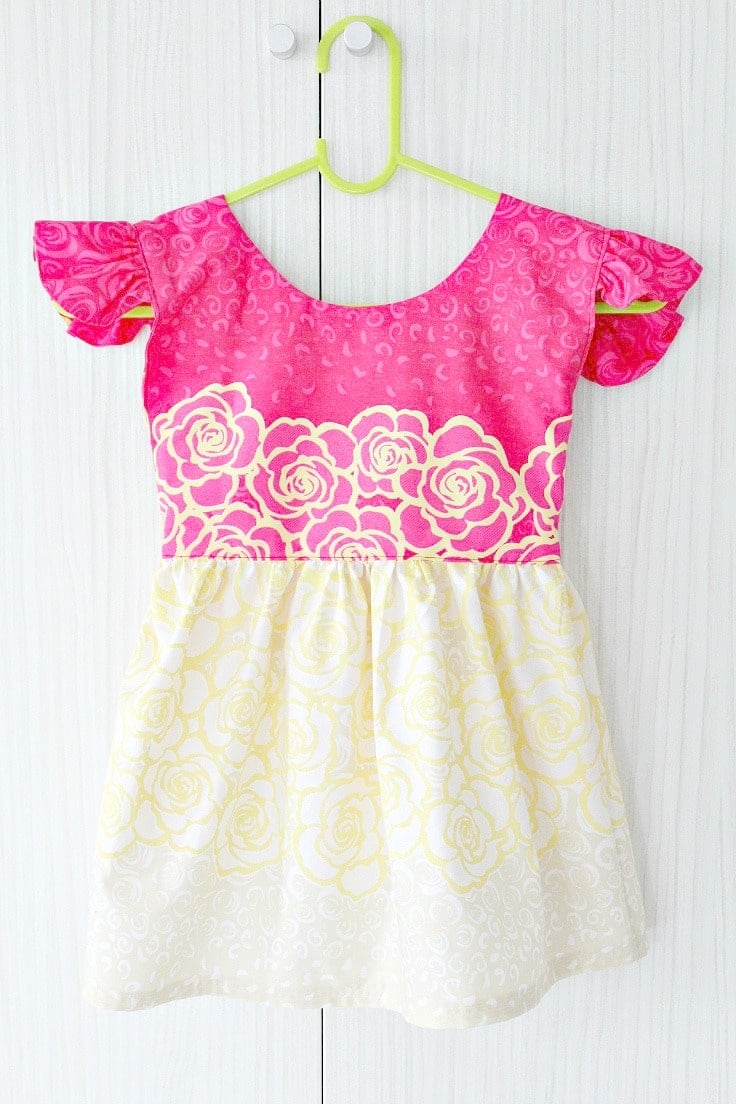

ABOUT PETRO
Hi, I’m Petro, author and founder of Easy Peasy Creative Ideas. Sewist, crafter, avid DIY-er, foodie, photographer, homemaker and mommy to one. I’m an expert at coming up with quick, clever sewing tips, recycling crafts and simple, easy recipes! You can find my ideas featured in reputable publications such as Country Living, Good House Keeping, Yahoo News, WikiHow, Shutterfly, Parade, Brit & Co and more. Thanks for stopping by and hope you’ll stay for a while, get to know me better and come back another time. Stick around for real fun projects! Read more…